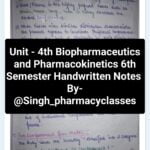METHODS OF DISSOLUTION
IN VITRO-IN VIVO CORRELATION
www.DuloMix.com
Contents:
Introduction
Methods of dissolution
In vitro-in vivo correlation
objectives
applications
IVIVC levels
2 www.DuloMix.com
INTRODUCTION:
Dissolution rate may be defined as the amount of substances
that goes in to solution per unit time under standard conditions
of temperature, pressure and solvent composition.
Dissolution is a dynamic process and is considered to involve
mass transfer from the solid surface to the liquid phase.
3 www.DuloMix.com
METHODS OF DISSOLUTION
USP COMPENDIAL APPARATUS
1. Rotating basket type (USP apparatus 1)
2. Rotating Paddle type (USP apparatus 2)
3. Reciprocating cylinder type (USP apparatus 3)
4. Flow – through cell type (USP apparatus 4)
5. Paddle over disc type (USP apparatus 5)
6. Cylinder type (USP apparatus 6)
7. Reciprocating holder type (USP apparatus 7)
4 www.DuloMix.com
1.ROTATING BASKET APPARATUS
5 www.DuloMix.com
Rotating basket apparatus consists of a cylindrical basket held
by a motor shaft and made of 22 mesh to hold the dosage form
is located centrally in the flask at a distance of 2cm from the
bottom and rotates in a round flask containing the dissolution
medium.
The most common rotating speed for this method is 100 rpm
The entire flask is immersed in a constant temperature bath set
at 37˚c
Useful for : solids,floaters,modified release dosage forms
6 www.DuloMix.com
2.ROTATING PADDLE APPARATUS
7 www.DuloMix.com
It consists of a special, coated paddle which acts as a stirrer and
it is attached vertically to a motor that rotates at a controlled
speed.
The apparatus is housed in a constant temperature water bath
maintained at 37˚c.
The dosage form is allowed to sink to the bottom of the vessel.
The most common operating speed are 50 rpm for solid dosage
form and 25 rpm for suspension.
A sinker (few turns of platinum wire attached to preparation)
may be used to prevent a capsule or tablet from floating and
used for film coated tablets that stick to the vessel walls or help
to position the tablet or capsule under the paddle.
Useful for:solids, modified release,transdermal patch
8 www.DuloMix.com
3.RECIPROCATING CYLINDER APPARATUS
9 www.DuloMix.com
This apparatus consists of a set of cylindrical flat bottomed glass
vessels equipped with reciprocating cylinders.
The dissolution medium is maintained at 37˚c
The apparatus is particularly used for dissolution testing of
controlled release bead type formulations, sustained release
dosage form.
10 www.DuloMix.com
4.FLOW THROUGH CELL APPARATUS
11 www.DuloMix.com
The apparatus consist of a reservoir for the dissolution medium
and a pump that forces medium through the cell holding the test
sample. Flow rate ranges from 4 to 16 ml/ml.
The material under test is placed in the vertically mounted
dissolution cell, which permits fresh solvents to be pumped in
from the bottom.
Laminar flow of the medium is achieved by using a pulse less
pump. the dissolution medium may be fresh or recirculated.
6 samples are tested during the dissolution testing and the
medium is maintained at 37˚c.
A main advantage is the easy maintenance of the sink condition
for dissolution and large volume of medium may also used.
Useful:low solubility drugs,drug undergoing degredation,media
including pH change.
12 www.DuloMix.com
5.PADDLE OVER DISK APPARATUS
13 www.DuloMix.com
The apparatus consists of a sample holder or disk assembly that
holds the product.
The entire preparation is placed in a dissolution flask filled with
specified medium maintained at 32˚c.
The paddle is placed directly over the disk assembly. Samples are
drawn midway between the surface of the dissolution medium
and top of the paddle blade at specified times.
6 units are tested during each time.
Useful :Transdermal patch, ointment, floaters, emulsions.
14 www.DuloMix.com
6. CYLINDER APPARATUS
15 www.DuloMix.com
This is a modification of Basket apparatus 1, in which the
basket is replaced with a stainless steel cylinder as a stirring
element.
Sample is mounted to cuprophan (inner porous cellulosic
material) and entire system is adhere to cylinder.
The dosage unit is placed between the surface of the
dissolution medium and the top of the rotating cylinder.
Useful for testing of transdermal patches.
16 www.DuloMix.com
7.RECIBROCATING DISK APPARATUS
17 www.DuloMix.com
The samples are placed on disk shaped holders using inert
porous cellulosic support which reciprocates vertically by
means of a drive inside a glass container containing dissolution
medium.
The test is carried out at 32˚c and reciprocating frequency is
about 30 cycles/min.
Useful: transdermal patch, solid dosage forms, small volumes
18 www.DuloMix.com
ALTERNATIVE METHODS
1. Rotating bottle method
2. Intrinsic dissolution method
3. Peristalsis method
4. Diffusion cell
19 www.DuloMix.com
1.ROTATING BOTTLE METHOD
20 www.DuloMix.com
The rotating bottle method was used mainly for controlled release
beads. For this purpose the dissolution medium may be easily
changed. The equipment consists of a rotating rack that holds the
sample drug products in in bottles.
The bottles are capped tightly and rotated in a 37˚c temperature
bath.
At various times, the samples are removed from the bottle,
decanted through a 40 mesh screen, and the residues are assayed.
To the remaining drug residues within the bottle are added an equal
volume of fresh medium and the dissolution test is continued.
A dissolution test with pH 1.2 medium for 1 hr, PH 2.5 medium
for the next 1 hr, followed by the pH4.5 medium for 1.5 hr, pH 7
medium for 1.5 hrs, and pH7.5 medium for 2 hrs was
recommended to stimulate condition of the gastrointestinal track.
21 www.DuloMix.com
2.INTRINSIC DISSOLUTION METHOD
22 www.DuloMix.com
Dissolution of a drug powder by maintaining a constant
surface area is called intrinsic dissolution.
Intrinsic dissolution is usually expressed as mg/cm2/min.
In one method, the basket method is adapted to test
dissolution of powder by placing the powder in a disk
attached with a clipper to the bottom of the basket.
It is useful when a new drug or substance may be tested for
dissolution without the effect of excipients.
23 www.DuloMix.com
2.PERISTALSIS METHOD
The peristalsis method attempts to stimulate the hydrodynamic
condition of the gastrointestinal tract in an in vitro dissolution
device.
The apparatus consists of a rigid plastic cylindrical tubing fitted
with a septum and rubber stopper at both ends.
The dissolution chamber consists of a space between the
septum and the lower stopper.
The apparatus is placed in a beaker containing the dissolution
medium.
The dissolution medium is pumped with peristaltic action
through the dosage form.
24 www.DuloMix.com
3.DIFFUSION CELLS
25 www.DuloMix.com
Static and flow through diffusion cells are commercially available
to characterize in vitro drug release and drug permeation
kinetics from a topical drug product or transdermal drug
product.
The Franz diffusion cell is a static diffusion system that is used
for characterizing drug permeation through a skin model.
The skin is mounted on the Franz diffusion cell system and the
drug product is placed on the skin surface.
The drug product permeates across the into a receptor fluid
compartment that may be sampled at various times.
This system is used for comparing in vitro drug release profiles
and selection an appropriate formulation that has optimum drug
delivery.
26 www.DuloMix.com
In Vitro-In Vivo Correlation(IVIVC)
In vitro-in vivo correlation(IVIVC) establishes a relationship
between a biological property of the drug and a
physicochemical property of the drug product containing the
drug substance.
FDA definition:
• A predictive mathematical model describing relationship
between in-vitro property of a dosage form and in-vivo
response.
The in vitro property is the rate or extent of drug dissolution r
release while the in vivo response is the plasma drug
concentration or amount of drug absorbed.
27 www.DuloMix.com
Objectives of IVIVC:
• To reduce the number of human studies during the formulation
development
• To serve as a surrogate for in vivo bioavailability
• To support biowaivers.
• To validate the use of dissolution methods and specification
settings(This is because the IVIVC includes in vivo relevance to in
vitro dissolution specifications).
• To assist quality control for certain scale-up and post-approval
changes (SUPAC).
28 www.DuloMix.com
The in vitro dissolution characteristics are dependent on the
physical properties of the active pharmaceutical ingredient, the
drug formulation, the hydrodynamics of the dissolution
apparatus, and the dissolution medium.
There are two basic approaches by which a correlation
between dissolution and the in vivo bioavailability.
1. By establishing a relationship between the in vitro dissolution
and the in vivo bioavailability parameter.
2. By using the data from previous bioavailability studies to modify
the dissolution method.
29 www.DuloMix.com
The applications of developing an IVIVC are:-
1. To ensure batch-to-batch consistency in the physiological
performance of a drug product by use of such in vitro values.
2. To serve as a tool in the development of a new dosage form
with desired in vivo performance.
3. To assist in validating or setting dissolution specifications (i.e.
The dissolution specifications are based on the performance
of product in vivo).
30 www.DuloMix.com
In vitro-In vivo correlation Levels
Three IVIVC levels have been defined
1.Level A
2.Level B
3.Level C
4.Multiple level C
31 www.DuloMix.com
1.Level A:
It is generally linear represents a point-to-point relationship
between in vitro dissolution and the in vivo rate of absorption.
The in vitro dissolution and in vivo absorption rate curve are
super imposable and the mathemathical description for both
curves is the same.
Advantages: 1.The in vitro dissolution curve serves as a
surrogate for in vivo performance. Any change in
manufacturing procedure or modification in formulation can be
justified without the need for additional human studies.
2.The in vivo dissolution serve as in vivo indicating quality
control procedure for predicting dosage forms performance.
32 www.DuloMix.com
33 www.DuloMix.com
2.Level B:
It utilizes the principles of statistical moment analysis. In this
level of correlation, the in vitro dissolution time of the product
is compared to either mean in vivo residence time or the mean
in vivo dissolution time.
It is not a point-to-point correlation since there are a number of
in vivo curve that will produce similar mean residence time
values.
A level B correlation does not uniquely reflect the actual in vivo
plasma level curves.
The in vitro data cannot be used for quality control standards.
34 www.DuloMix.com
35 www.DuloMix.com
3.Level C:
It is a single point correlation.
It relates one dissolution time(e.g. T50%) to one pharmacokinetic
parameter as a AUC, tmax or Cmax
This level is generally useful only as a guide in formulation
development or quality.
36 www.DuloMix.com
4. Multiple Level C:
It is correlation involving one or several pharmacokinetics
parameter to the amount of drug dissolved at various time
points.
37 www.DuloMix.com










